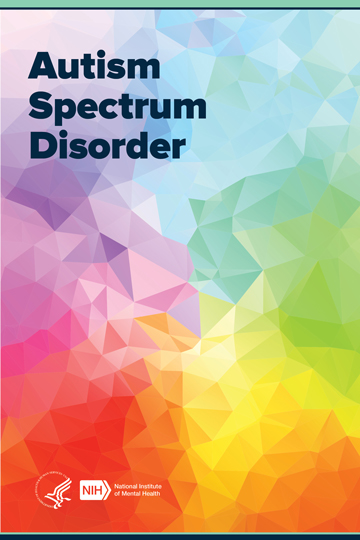Comprehending Autism: A Comprehensive Overview to Symptoms And Signs
Autism Spectrum Problem (ASD) incorporates a wide array of attributes that can significantly affect an individual's social interactions and daily functioning. Recognizing these nuances not just help caretakers and instructors in providing proper support however likewise promotes a more inclusive atmosphere for individuals with ASD.
Summary of Autism Spectrum Disorder
Specifying Autism Range Condition (ASD) includes recognizing it as a complicated neurodevelopmental problem defined by a range of obstacles in social communication, interaction, and behavior patterns. The term "range" mirrors the broad variability in signs and symptoms and their severity, which can vary substantially from one individual to another. ASD normally manifests in very early youth, although some individuals might not receive a medical diagnosis till later on in life.
Aspects affecting the advancement of ASD include hereditary tendencies and ecological variables, although the specific reasons continue to be under examination. Diagnosis frequently relies upon behavior evaluations, as there are no conclusive medical examinations for ASD. Early treatment is important and can substantially boost results, concentrating on enhancing interaction skills, social interactions, and flexible actions.
People with ASD may additionally exhibit one-of-a-kind strengths, such as extraordinary attention to detail or specific locations of expertise. Recognizing the multifaceted nature of ASD is necessary for promoting a comprehensive atmosphere that fits neurodiversity. Continued research study is essential for creating reliable treatments and support group, allowing people with ASD to thrive and fulfill their potential within culture.
Typical Signs of Autism
Acknowledging the common signs of Autism Spectrum Disorder (ASD) is essential for very early recognition and treatment. These indicators can differ extensively in seriousness and discussion, but certain features are often observed in people with ASD.
Among the most common indications is a marked difficulty in developing and preserving eye get in touch with. People might additionally exhibit restricted rate of interest in social communications and reveal a choice for solitary play. Repeated actions, such as hand-flapping, rocking, or rotating objects, commonly emerge early in youth. In addition, some youngsters might create stringent routines and end up being troubled if these regimens are interfered with.
Sensory sensitivities are additionally usual; individuals might panic or underreact to sensory stimulations, such as sounds, appearances, or lights. autism. Language growth can be atypical, with some kids showing postponed speech or using language in unusual methods, consisting of echolalia-- duplicating phrases or sentences listened to somewhere else
It is necessary to keep in mind that not every individual with ASD will certainly show all these indicators, and the level of these behaviors can differ dramatically. Early acknowledgment enables prompt support and sources, improving the quality of life for those on the range.
Social Communication Obstacles
Social interaction obstacles are a trademark click to read more of Autism Range Disorder (ASD), affecting an individual's capability to involve effectively with others. These problems can materialize in numerous ways, including challenges in initiating and keeping discussions, comprehending social cues, and responding suitably in social interactions.
People with ASD may battle with nonverbal communication, such as eye get in touch with, facial expressions, and body look at this site language. This can lead to misunderstandings, as their communicative intent might not be properly interpreted by others. Additionally, they may locate it difficult to understand the subtleties of tone and context, which are necessary for effective interaction.
In team setups, individuals with ASD may feel overloaded and may not recognize exactly how to sign up with in conversations (autism). They could likewise exhibit irregular conversational patterns, such as monologuing concerning details interests without recognizing social reciprocity
Moreover, these obstacles can result in social isolation or problems in forming connections, as peers may misinterpret their behavior or communication design. Recognizing these social communication obstacles is important for promoting supportive atmospheres that advertise social skills growth and enhance the high quality of communications for people on the autism range.
Sensory Reactions and sensitivities
Lots of individuals with Autism Spectrum Disorder (ASD) experience increased sensory level of sensitivities that can substantially influence their every day lives. These level of sensitivities might show up as over-responsiveness or under-responsiveness to sensory stimuli, consisting of explanation noises, lights, appearances, tastes, and smells. An individual with ASD may discover day-to-day sounds, such as a vacuum cleaner or crowded settings, overwhelmingly upsetting, leading to anxiousness or meltdowns. Conversely, some may show an indifference to discomfort or severe temperatures, which can pose safety and security concerns.
Sensory processing differences in people with ASD can additionally impact their capability to participate in social interactions and regular activities. A kid who is sensitive to touch may stand up to physical affection or prevent specific clothes textiles. A preference for particular structures or preferences can limit nutritional alternatives and create challenges throughout nourishments.
Recognizing these sensory level of sensitivities is essential for identifying the unique experiences of individuals with ASD. Understanding of their sensory accounts can promote better communication and support methods, developing an atmosphere that suits their demands and improves their lifestyle. Eventually, acknowledging sensory sensitivities is an essential part of comprehending the more comprehensive spectrum of autism.

Supporting People With Autism
Effective support for people with Autism Spectrum Disorder (ASD) is important for enhancing their general health and promoting self-reliance. Support methods must be tailored to fulfill the distinct requirements of each individual, considering their strengths and challenges.

Social abilities training can likewise play a crucial function. autism. Engaging people in team activities or role-playing situations can enhance their ability to browse social communications. Furthermore, it is necessary to inform member of the family, caretakers, and peers regarding ASD to foster a inclusive and encouraging neighborhood
Final Thought
By promoting improved interaction and social abilities, people with autism can browse their atmospheres a lot more successfully. Ultimately, increased recognition and assistance can considerably boost the high quality of life for those impacted by ASD.
Autism Range Condition (ASD) incorporates a broad variety of qualities that can significantly affect a person's social communications and daily performance.Individuals with ASD might struggle with nonverbal communication, such as eye get in touch with, facial expressions, and body language.Lots of people with Autism Range Condition (ASD) experience enhanced sensory level of sensitivities that can substantially impact their daily lives.Sensory handling differences in people with ASD can likewise affect their ability to involve in social interactions and regular tasks.Comprehending these sensory sensitivities is essential for acknowledging the one-of-a-kind experiences of individuals with ASD.
Comments on “How to Connect Properly with Liked Ones on the Autism Range”